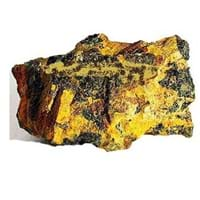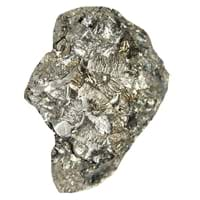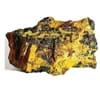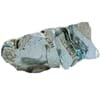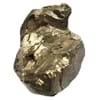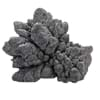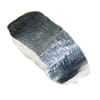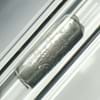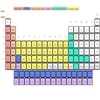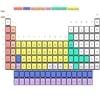Polonium vs Hafnium
Periodic Table
Symbol
Po
Hf
Group Number
16
2
4
14
Period Number
6
6
Block
p block
d block
Element Family
Post-Transition
Transition Metal
CAS Number
7440086
99+
7440586
30
Space Group Name
Pm-3m
P63/mmc
Space Group Number
221.00
3
194.00
5
Facts
Interesting Facts
- Polonium was the first radioactive element to be discovered.
- Polonium element and its compounds are highly radioactive.
- Its alloy with Beryllium provides source of neutrons.
- Hafnium metal is highly reactive, hence not found free in nature.
- Hafnium metal as predicated after Mendeleev finished his periodic table.
Sources
Mining, Ores of metals
By-product Zirconium Refining
History
Who Discovered
Pierre Curie and Marie Curie
Dirk Coster and George de Hevesy
Discovery
In 1898
In 1922
Abundance
Abundance In Universe
Not Available
7 * 10-8 %
25
Abundance In Sun
~-9999 %
~0.0000001 %
26
Abundance In Meteorites
Not Available
0.00 %
37
Abundance In Earth's Crust
Not Available
0.00 %
31
Abundance In Oceans
0.00 %
99+
0.00 %
27
Uses
Uses & Benefits
- Polonium metal has different Allotropes, it is used in antistatic devices and for research purpose.
- A 1 gram of Polonium can reach a temperature of 500°C, hence it is used as a heat source for space equipment.
- It has an ability to absorb neutrons and hence it is used to make control rods in nuclear submarines. And this metal is also used in Plasma welding torches.
- It alloys with iron, titanium and niobium are very useful.
Industrial Uses
Aerospace Industry, Ammunition Industry
Ammunition Industry
Medical Uses
NA
NA
Other Uses
Alloys
Alloys, In Nuclear Reactors, Nuclear Research, Research Purposes
Biological Properties
Toxicity
Highly Toxic
Toxic
Present in Human Body
No
No
In Blood
0.00 Blood/mg dm-3
37
Not Available
In Bone
0.00 p.p.m.
36
Not Available
Physical Properties
Melting Point
254.00 °C
99+
2,150.00 °C
10
Boiling Point
962.00 °C
99+
5,400.00 °C
5
Appearance
Physical State
Solid
Solid
Color
Silver
Gray
Luster
NA
Metallic
Hardness
Mohs Hardness
Not Available
5.50
7
Brinell Hardness
Not Available
1,450.00 MPa
6
Vickers Hardness
Not Available
1,520.00 MPa
5
Speed of Sound
Not Available
3,010.00 m/s
27
Optical Properties
Allotropes
Yes
No
α Allotropes
α-polonium
Not Available
β Allotropes
β-polonium
Not Available
γ Allotropes
Not Available
Not Available
Chemical Properties
Chemical Formula
Po
Hf
Isotopes
Known Isotopes
29
10
32
7
Electronegativity
Pauling Electronegativity
2.00
7
1.30
32
Allred Rochow Electronegativity
1.76
2
1.23
25
Mulliken-Jaffe Electronegativity
2.48
1
Not Available
Allen Electronegativity
2.19
2
1.16
37
Electropositivity
Pauling Electropositivity
2.00
99+
2.70
22
Ionization Energies
1st Energy Level
812.10 kJ/mol
14
658.50 kJ/mol
40
2nd Energy Level
Not Available
1,440.00 kJ/mol
99+
3rd Energy Level
Not Available
2,250.00 kJ/mol
99+
4th Energy Level
Not Available
3,216.00 kJ/mol
99+
Electrochemical Equivalent
3.90 g/amp-hr
8
1.66 g/amp-hr
99+
Electron Work Function
Not Available
3.90 eV
27
Other Chemical Properties
Ionization, Radioactive Isotopes, Solubility
Anti Corrosion, Ionization, Radioactive Isotopes, Solubility
Atomic Properties
Atomic Number
84
32
72
99+
Electron Configuration
[Xe] 4f14 5d10 6s2 6p4
[Xe] 4f14 5d2 6s2
Crystal Structure
Monoclinic (MON)
Hexagonal Close Packed (HCP)
Crystal Lattice
MON-Crystal-Structure-of-Polonium.jpg#100
BCC-Crystal-Structure-.jpg#100
Atom
Number of Protons
84
32
72
99+
Number of Neutrons
125
19
106
29
Number of Electrons
84
32
72
99+
Radius of an Atom
Atomic Radius
168.00 pm
23
159.00 pm
28
Covalent Radius
140.00 pm
99+
175.00 pm
23
Van der Waals Radius
197.00 pm
29
200.00 pm
28
Atomic Weight
209.00 amu
28
178.49 amu
39
Atomic Volume
22.23 cm3/mol
13
13.60 cm3/mol
38
Adjacent Atomic Numbers
Valence Electron Potential
Not Available
81.00 (-eV)
16
Lattice Constant
335.90 pm
99+
319.64 pm
99+
Lattice Angles
π/2, π/2, π/2
π/2, π/2, 2 π/3
Lattice C/A Ratio
Not Available
1.58
12
Mechanical Properties
Density
Density At Room Temperature
9.20 g/cm3
99+
13.31 g/cm3
26
Density When Liquid (at m.p.)
9.40 g/cm3
19
12.00 g/cm3
12
Tensile Strength
Not Available
445.00 MPa
8
Viscosity
Not Available
Not Available
Vapor Pressure
Vapor Pressure at 2000 K
Not Available
0.00 (Pa)
24
Elasticity properties
Shear Modulus
Not Available
30.00 GPa
23
Bulk Modulus
Not Available
110.00 GPa
15
Young's Modulus
Not Available
78.00 GPa
25
Poisson Ratio
Not Available
0.37
7
Other Mechanical Properties
NA
Ductile, Malleable
Magnetic Properties
Magnetic Characteristics
Specific Gravity
9.32
31
13.31
18
Magnetic Ordering
Nonmagnetic
Paramagnetic
Electrical Properties
Electrical Property
Conductor
Conductor
Resistivity
0.40 nΩ·m
99+
331.00 nΩ·m
14
Electrical Conductivity
0.02 106/cm Ω
99+
0.03 106/cm Ω
39
Electron Affinity
183.30 kJ/mol
3
0.00 kJ/mol
40
Thermal Properties
Specific Heat
0.12 J/(kg K)
40
0.14 J/(kg K)
37
Molar Heat Capacity
26.40 J/mol·K
28
25.73 J/mol·K
36
Thermal Conductivity
20.00 W/m·K
99+
23.00 W/m·K
99+
Critical Temperature
Not Available
Not Available
Thermal Expansion
23.50 µm/(m·K)
16
5.90 µm/(m·K)
99+
Enthalpy
Enthalpy of Vaporization
60.30 kJ/mol
99+
661.10 kJ/mol
5
Enthalpy of Fusion
13.00 kJ/mol
26
25.10 kJ/mol
8
Enthalpy of Atomization
134.00 kJ/mol
99+
703.00 kJ/mol
5
Standard Molar Entropy
Not Available
43.60 J/mol.K
34
|
||
|
||
|
